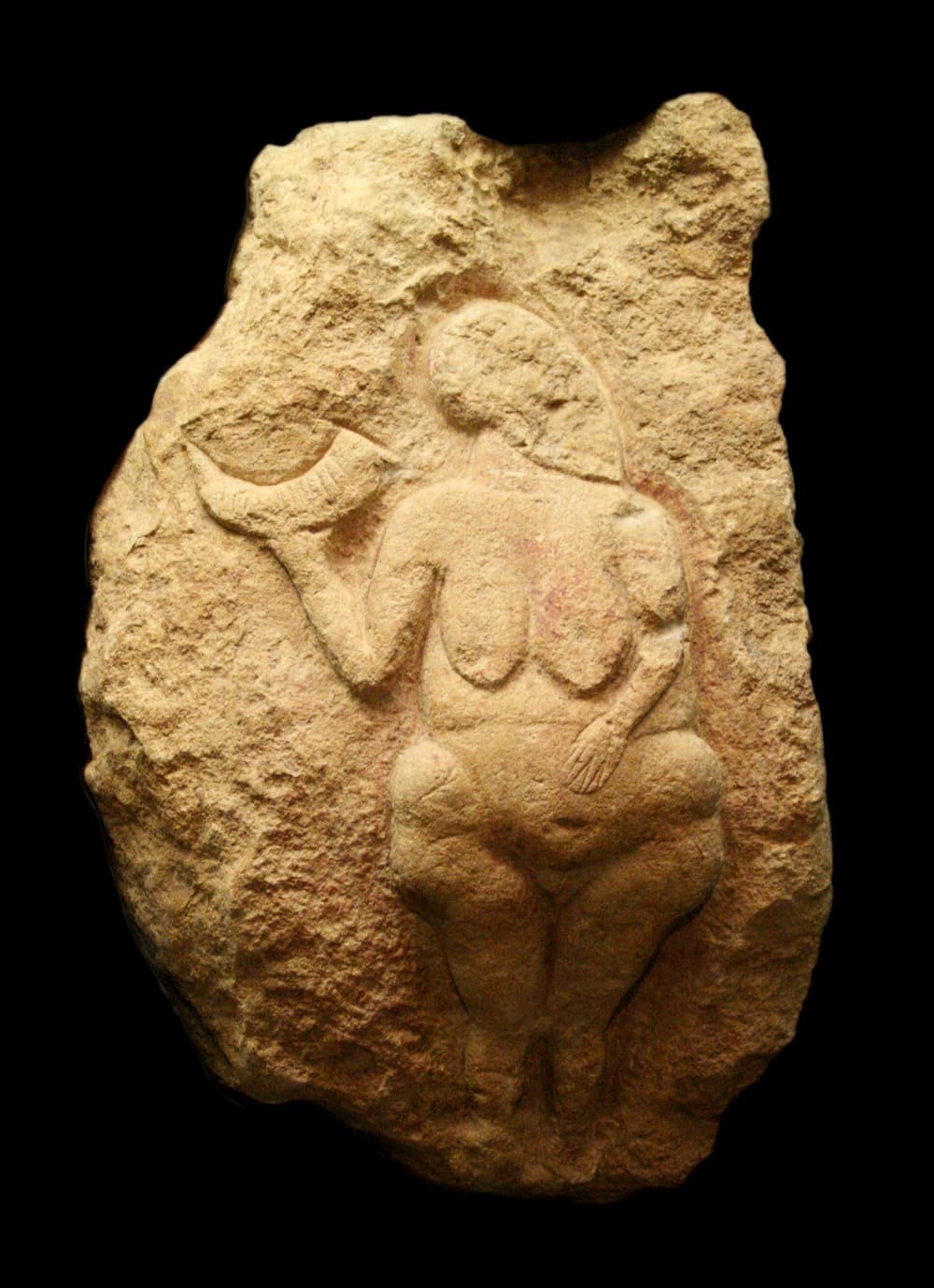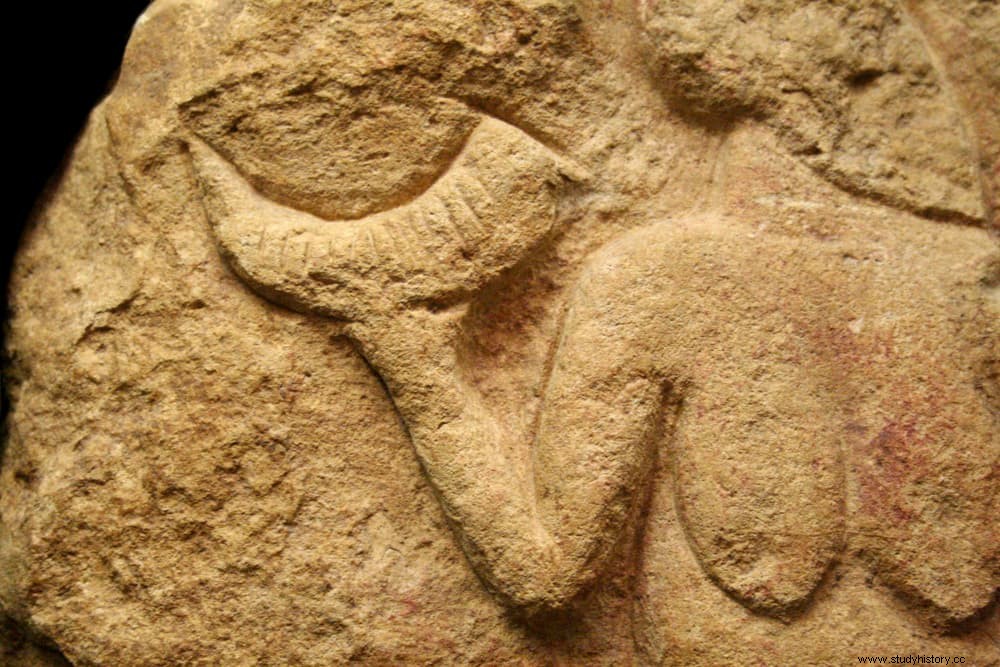In 1908, the doctor Jean-Gaston Lalanne, passionate about anthropology and prehistory, decided to rent a rock shelter in the place called Laussel from the commune of Marquay (in the Dordogne, in southwestern France), where he had found traces of remains. archaeological.

He immediately began the excavations, for which he hired a group of workers led by Raymond Peyrille, and which lasted for several years.
In 1911 Lalanne's insistence paid off, and reliefs carved into the rock began to appear, various venus Paleolithic and other representations of different animals. One of them was the so-called Venus of Berlin , which was sold by Peyrille without Lalanne knowing about it to a Berlin museum. Peyrille was reported and convicted, but the museum refused to return the object (it was probably destroyed during World War II).
In early December 1911, the strangest of all venus appeared. found, which represented a woman with a bison horn in her hand. In the level where it was found, tools from Gravettian lithic and bone industry also appeared, which allows us to date it to that period, about 25,000 years ago. Lalanne decided to extract the figure from the rock by cutting the stone, something that was done with very little care since only half a centimeter was left in places.
It was transferred to Lalanne's private museum in Le Bouscat, where it remained until 1960 when the family donated the entire collection to the Bordeaux Archaeological Museum (today the Aquitaine Museum).
Carved as a bas-relief from a block of limestone and painted in red ochre, the Venus de Laussel It has dimensions of 54 by 36 centimeters, and shows a frontal female figure holding in her right hand an object generally interpreted as a bison horn (according to Waldemar Deonna's theory). There are 13 notches on the horn, which some experts believe may represent lunar or menstrual cycles.
Her left hand is resting on her belly, perhaps indicating that she is pregnant, and what appears to be her hair falls over her left shoulder. Like all venus Paleolithic, the image shows some exaggeratedly developed parts, while others are absent, such as the feet and the face, in this case turned towards the horn.

Riane Eisler believes that what she is holding is not a bison horn, but a crescent moon, and the 13 marks would correspond to the annual lunar cycles. Also, she says, it is likely that the Venus of Laussel was the patron saint of young women and women in childbirth .
For Licia Filingeri the horn itself is a sign of fullness, of richness of life, from which the symbol of the cornucopia or horn of plenty probably derives. And the horns are related to the Great Mother, as the supreme divinity of fertility.
Eduardo Ripoll affirms that the venus was associated with the figure of a man (possibly extracted independently by Lalanne) that due to his position with his arm raised, can be considered to be performing a ritual act . In fact, due to the layout of the 5 reliefs found at the site, some researchers believe that it was a sanctuary. The other four reliefs were:the aforementioned Venus of Berlin (which also showed a woman with a horn), the male figure with the raised arm called the hunter , a venus with hat , and two intertwined figures (possibly in the act of love).
In any case, today the figure is generally interpreted as a representation of fertility. Also, the Venus of Laussel it is one of many examples of prehistoric art in the open air. According to Fred S. Kleiner, this shows that the popular notion that all Paleolithic art comes from mysterious, dark caverns is false .
